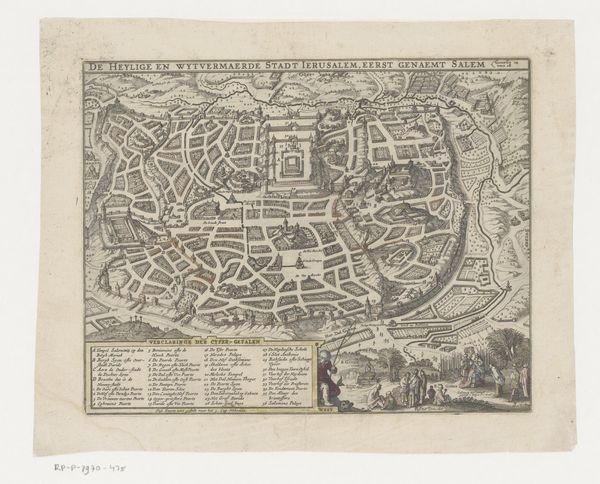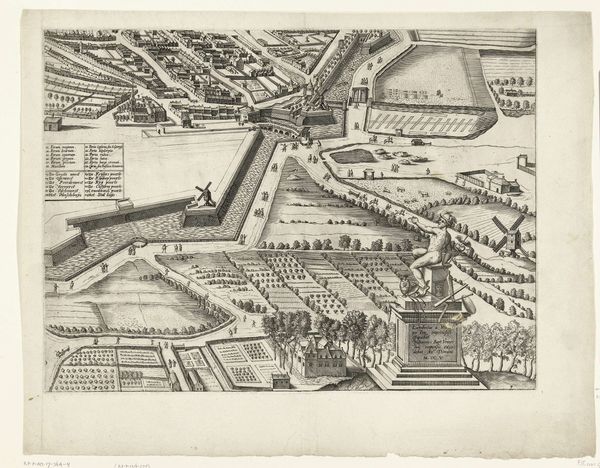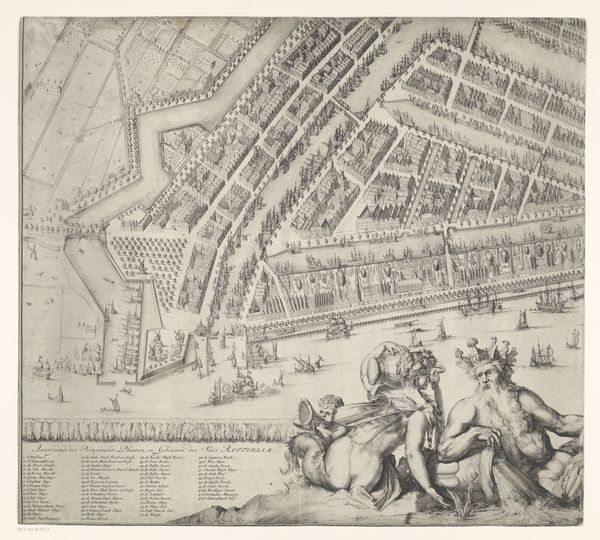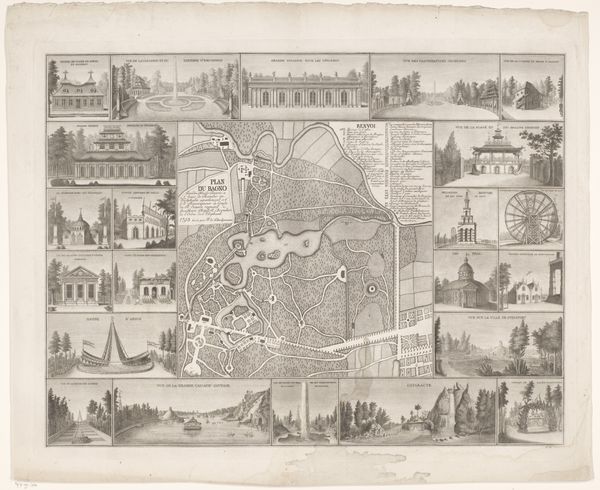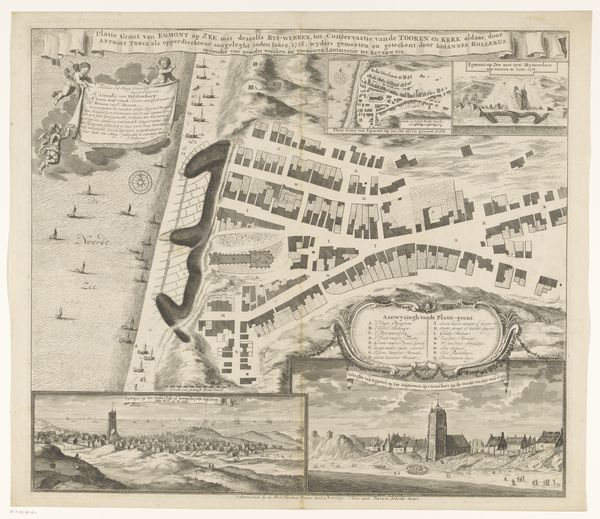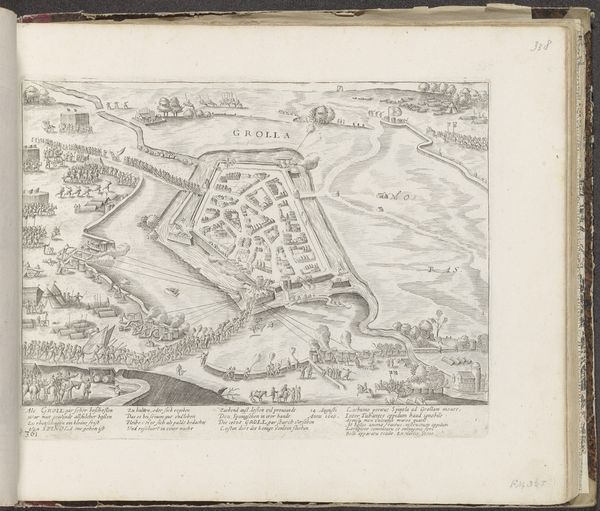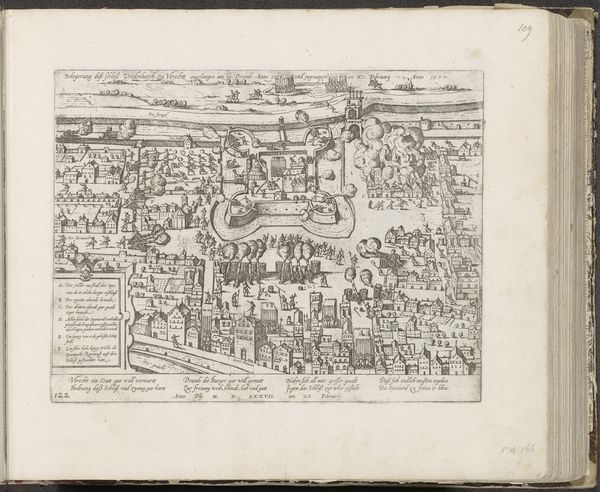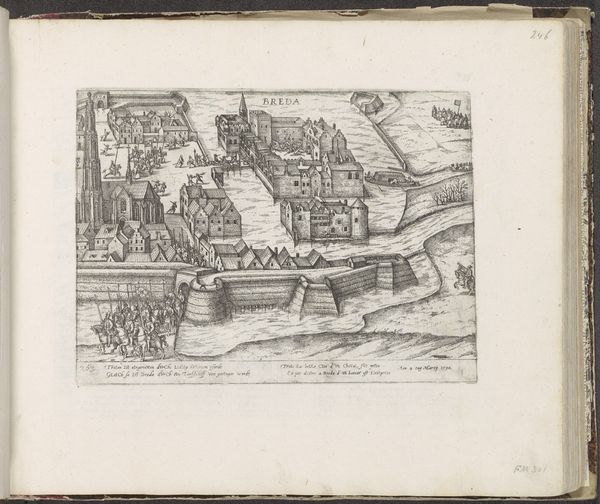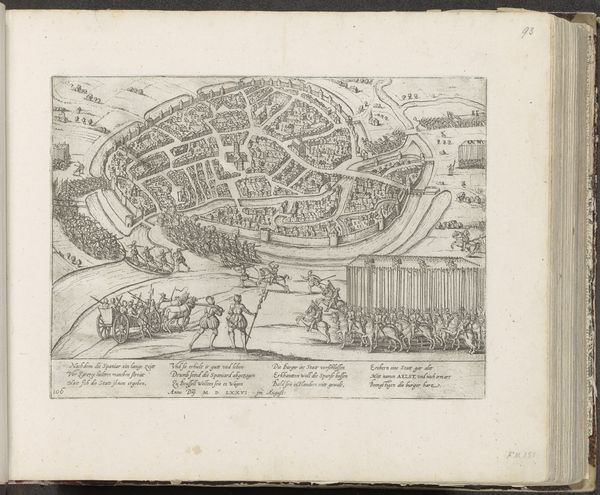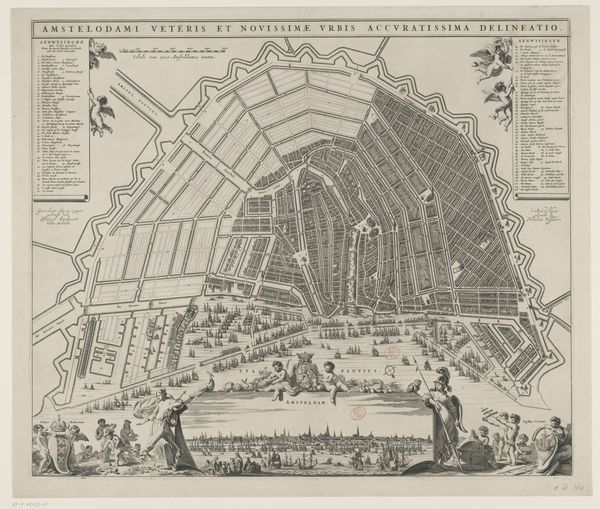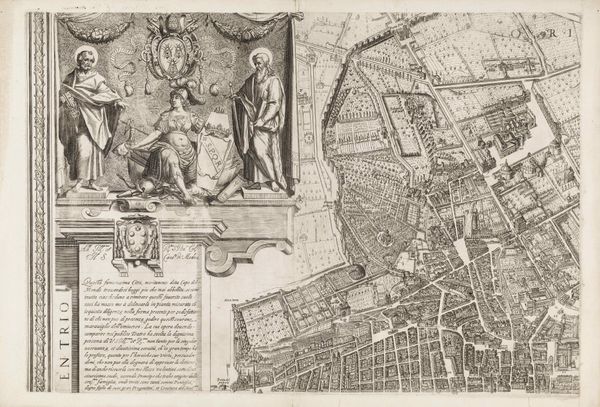
Plattegrond van Amsterdam met stadsgezicht, bestaande uit twee delen 1691 - 1693
0:00
0:00
print, engraving
#
baroque
#
dutch-golden-age
# print
#
cityscape
#
engraving
Dimensions: height 821 mm, width 1005 mm
Copyright: Rijks Museum: Open Domain
This two-part map of Amsterdam features not only a detailed city plan but also a vibrant panorama teeming with symbolic figures. The cherubs, nymphs, and other mythological figures adorning the scene are more than mere decoration. These figures, often associated with prosperity and protection, echo classical antiquity's symbolic language. These motifs can be traced back to ancient Roman art, where they were invoked to ensure the well-being and flourishing of cities. Consider, for example, the cornucopia held by a nymph, a symbol of abundance that recurs in various forms throughout Western art. This emblem, rooted in the collective unconscious, carries a promise of prosperity and divine favor. Observe how these symbols, potent with cultural memory, engage viewers, stirring deep-seated feelings of security. The cyclical reappearance of such motifs underscores their enduring significance, reminding us of the non-linear progression of cultural symbols and the enduring power of the past.
Comments
No comments
Be the first to comment and join the conversation on the ultimate creative platform.
